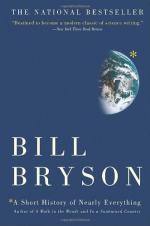|
This section contains 523 words (approx. 2 pages at 400 words per page) |

|
Part 3, Chapter 11 Summary and Analysis
In 1911, C.T. R. Wilson got tired of tramping to the top of Scottish hills to study clouds and invented an indoor cloud chamber, where he could cool and moisturize air. When he fired an alpha particle through it to start a cloud, it left a contrail like an airplane. Wilson accidentally invented a particle detector and proved that subatomic particles did, indeed, exist.
According to modern thinking, the basic building blocks of matter are quarks. Quarks are particles that make up the particles that make up atoms. In the Standard Model, there are six quarks, five known bosons (and possibly a sixth), and six leptons. Quarks are divided into six categories called flavors: strange, charm, up, down, top and bottom. In addition, they are divided into the colors of red, green and blue.
Quarks are held together by...
(read more from the Part 3, Chapter 11 Summary)
|
This section contains 523 words (approx. 2 pages at 400 words per page) |

|




